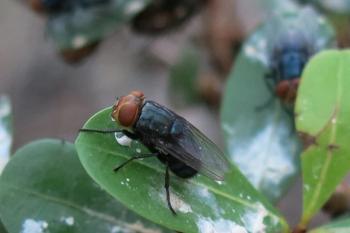
Jockey Club reports decline in stallions, mares bred in 2007
The number of stallions covering mares, and the number of mares bred in North America both declined in 2007, according to the latest statistics from the Jockey Club.
The number of stallions covering mares, and the number of mares bred in North America both declined in 2007, according to the latest statistics from the Jockey Club.
Based on the club's Report of Mares Bred (RMB), 2,808 stallions covered 56,796 mares in North America during the first 10 months last year, an 8 percent decline from the 3,053 stallions reported during the same period of 2006. The number of mares bred was down 4.4 percent from the 59,434 bred the year before.
"The number of stallions has persistently declined over the last two decades, but the percentage decline to date for 2007 is larger than in recent years," says Matt Iuliano, Jockey Club vice president for registration services.
Experts say the decline in stallions and breeding activity likely is a reflection of the economy and is not tied to genetic or medical issues.
"Horse breeding in some states hasn't been as economically rewarding in the last few years. The average breeder is simply cutting back," Dr. John V. Steiner, DVM, Dipl. ACT, with the Hagyard Equine Medical Institute's fertility clinic in Lexington, Ky., tells DVM Newsmagazine.
"Racing has been on the decline, too, and that affects these numbers," he adds. "In some locations, there haven't been enough horses to fill races — perhaps eight will run a race instead of a full field of 12. But, with some states now putting in slot machines at tracks, perhaps breeders will have an incentive and you'll start to see the numbers go back up."
Tax laws may be a factor as well, according to another equine theriogenologist, Dr. Peter Sheerin, DVM, Dipl. ACT, at Rood and Riddle Equine Hospital in Lexington.
"The reason (for the statistical drop) is most likely economics and not reproductive," Sheerin tells DVM Newsmagazine.
"When the tax laws were changed in the 1980s, the number of people using the equine industry for tax advantages decreased, so the number of mares bred has decreased over time. As the economy goes, so goes the horse industry," Sheerin says.
"The decrease in stallion numbers also may be related to an increase in stallion book size. Over those 20 years, the number of stallions breeding greater than 100 mares has increased. The number of people breeding to produce racehorses vs. sales weanlings/yearlings probably has decreased as well. This results in breeding to horses that are popular as sales sires."
The Jocky Club report shows only a tiny decline in the number of North American stallions covering at least 100 mares, but a modest increase in Thoroughbred breeding activity in Kentucky.
Throughout North America in 2007, 125 stallions were bred to 100 or more mares, one fewer than covered that number in 2006, and three fewer than the record 128 stallions to do so in 2005. Of the 125 stallions, 102 stood in Kentucky, up from 94 in 2006. Other states and provinces in which stallions covered 100 or more mares were Florida 912), California (3), Maryland (3), New York (2), Arkansas (2), Louisiana (1) and Ontario (1).
Kentucky traditionally leads North America in Thoroughbred breeding activity. During 2007 so far, the state's 333 reported stallions covered 21,724 mares, or 38.2 percent of all mares reported bred in North America. That's an increase of 2.6 percent over the 21,172 reported at this time in 2006.
The top 10 states and provinces, ranked by number of mares reported bred through Oct. 11, are:
Kentucky, 333 stallions covering 21,724 mares; Florida, 211 stallions bred to 6,376 mares; California, 255 stallions and 4,447 mares; Louisiana, 238 stallions and 3,780 mares; New York, 92 stallions and 1,967 mares; Texas, 205 stallions and 1,935 mares; New Mexico, 137 stallions and 1,775 mares; Maryland, 47 stallions and 1,384 mares; Oklahoma, 120 stallions and 1,381 mares; and Ontario, 66 stallions covering 1,257 mares.
RMB figures for all reported stallions in 2007 are available through the Publications & Resources section of the Jockey Club's Web site.
Newsletter
From exam room tips to practice management insights, get trusted veterinary news delivered straight to your inbox—subscribe to dvm360.






